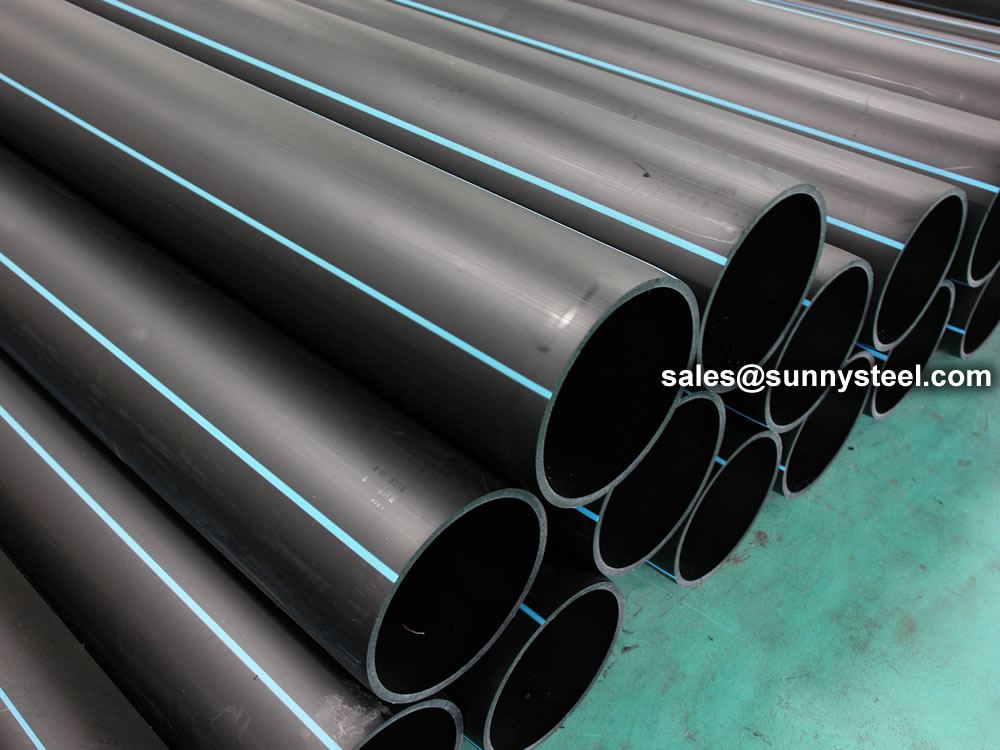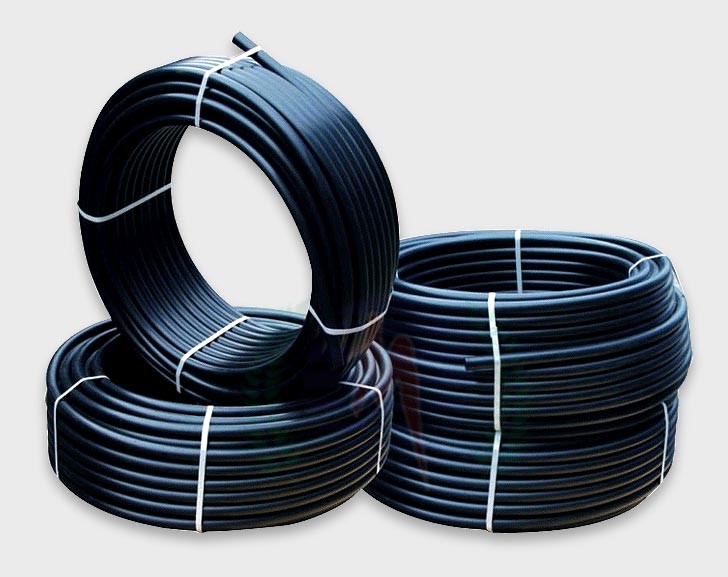Explore the Manufacturing Refine Behind High-Quality HDPE Pipe and Its Applications
The production procedure of high-grade HDPE pipes is elaborate and methodical. It starts with the option of raw products that enhance performance. Following this, ethylene goes through polymerization to create resin, which is after that formed via extrusion. Quality control is extremely important, making certain that the end product meets rigorous requirements. The trip of HDPE pipelines does not finish with manufacturing. Their applications throughout various industries reveal a more comprehensive significance worth taking a look at.
Comprehending HDPE: Residences and Advantages

High-density polyethylene (HDPE) is a functional thermoplastic recognized for its resilience and resistance to various environmental aspects. This product exhibits excellent tensile strength, making it suitable for demanding applications. Its low-density structure contributes to a light-weight product, assisting in simplicity of taking care of and installment. HDPE additionally showcases amazing resistance to chemicals, which minimizes destruction when exposed to harsh materials.
The product's reduced wetness absorption even more boosts its long life, making it ideal for usage in pipelines and tank. Furthermore, HDPE is immune to ultraviolet (UV) radiation, making sure that products maintain their honesty even when revealed to sunlight. Furthermore, its flexibility enables the creation of complex forms without endangering stamina. The environmentally friendly nature of HDPE, typically originated from recycled materials, includes in its allure, promoting sustainable techniques in manufacturing. On the whole, these homes and benefits make HDPE a preferred option for different commercial and consumer applications.
Basic Material Choice for HDPE Production
The choice of basic materials for HDPE manufacturing is important to verify the end product meets the desired requirements and quality standards. High-density polyethylene (HDPE) is mostly generated from polymerized ethylene, originated from nonrenewable fuel sources such as natural gas or unrefined oil. The quality of these feedstocks substantially affects the mechanical and thermal buildings of the last HDPE.
Ingredients additionally play a substantial duty in boosting HDPE's performance, consisting of antioxidants, UV stabilizers, and colorants, which enhance resilience and resistance to ecological factors. The choice procedure should think about not only the chemical structure of the raw products yet additionally their handling attributes to assure efficient manufacturing.
In addition, the sourcing of resources must prioritize sustainability and conformity with environmental guidelines, as liable methods are important in today's market. Inevitably, careful raw product option lays the foundation for generating top notch HDPE pipes suitable for varied applications.
The Extrusion Process: Shaping HDPE Pipeline
The extrusion procedure plays an important role fit HDPE pipelines, beginning with meticulous product preparation strategies that guarantee perfect circulation and consistency. Just as essential is the layout of the die, which directly influences the last dimensions and surface area top quality of the pipe. With each other, these aspects add substantially to the efficiency and top quality of HDPE pipe production.
Product Prep Work Strategies
Efficient production of HDPE pipelines starts with precise product prep work techniques, especially the extrusion process. During this stage, high-density polyethylene material is initial dried to get rid of dampness, ensuring excellent circulation features. The resin is then fed into the extruder, where it goes through home heating and melting, changing right into a viscous state. This home heating procedure is carefully controlled to preserve the product's honesty and efficiency. The liquified HDPE is required with a die, forming it right into a constant pipeline type. Correct temperature level administration throughout extrusion is essential, as it straight influences the product's buildings and the last item quality. As soon as formed, the HDPE pipeline is cooled down and reduced to defined sizes, prepared for succeeding processing and applications.
Die Design Significance
Accuracy in die style plays an important role in the extrusion process of HDPE pipelines. The die offers as the last shaping tool, directly affecting the pipeline's measurements, wall surface thickness, and surface finish. A well-designed die guarantees consistent product flow, reducing problems such as irregularities and weak spots. The geometry of the die should be enhanced to suit the details homes of HDPE, including its thickness and thermal actions during extrusion. In addition, the cooling price of the material as it goes through the die can significantly impact the pipeline's architectural stability. Investing in sophisticated die innovation is essential for producers intending to generate top notch HDPE pipes that satisfy sector standards and customer assumptions.
Quality Assurance Steps in HDPE Production
Various elements influence the high quality of HDPE pipe production, reliable top quality control procedures are crucial to ensure uniformity and integrity in the last item (Midland TX HDPE Pipe Fittings in Stock). Secret high quality control methods consist of strenuous product inspection, confirming that the raw polyethylene satisfies well established requirements for purity and thickness. During the extrusion procedure, criteria such as temperature level, stress, and cooling time are closely kept an eye on to preserve dimensional accuracy and architectural honesty
Furthermore, post-production testing is vital; suppliers often perform hydrostatic examinations to examine the pipeline's strength and published here resistance to stress. Visual assessments for surface issues better improve quality control. Qualification from appropriate standards organizations, like ASTM or ISO, offers an added layer of integrity. By carrying out these complete quality control measures, makers can reduce defects, improve efficiency, and guarantee that the HDPE pipelines satisfy the particular requirements of numerous applications, ultimately bring about consumer contentment and rely on the product.
Applications of HDPE Pipe Across Industries
HDPE pipelines are utilized throughout numerous industries because of their toughness and flexibility. In water circulation systems, they guarantee reliable shipment, while in wastewater monitoring, they offer trusted remedies for waste transport. In addition, farming irrigation networks take advantage of HDPE's resistance to corrosion and flexibility, making it an ideal option for contemporary farming practices.

Water Distribution Equipments
A considerable variety of markets count on high-density polyethylene (HDPE) pipes for efficient water distribution systems. Recognized for their durability and resistance to corrosion, HDPE pipes are commonly made use of in metropolitan water supply networks, farming irrigation, and industrial applications. Their light-weight nature facilitates very easy handling and setup, lowering labor expenses and time. In addition, HDPE pipelines can fit numerous stress degrees, making them suitable for both low and high-pressure systems. hdpe pipe suppliers Midland TX. The versatility of the product permits smooth assimilation into existing infrastructure, reducing the need for comprehensive excavation. HDPE's resistance to chemical leaching guarantees that the water delivered continues to be safe and tidy, making it a perfect choice for preserving the high quality of safe and clean water across numerous industries.
Wastewater Administration Solutions
Reliable water distribution systems likewise lead the way for innovative wastewater administration solutions, where high-density polyethylene (HDPE) pipes play a significant role. Distinguished for their sturdiness and resistance to deterioration, HDPE pipes are perfect for moving wastewater in different setups. Their adaptability allows for very easy installation in complex atmospheres, decreasing the need for considerable excavation. Additionally, HDPE's smooth interior surface minimizes friction, enhancing flow prices and performance. inch camlock fittings These pipes are additionally immune to my website chemical leaching, ensuring that contaminants do not endanger the surrounding environment. Industries, towns, and therapy centers increasingly count on HDPE pipes for their dependability and durability, making them a favored choice for contemporary wastewater management systems. This adaptability underscores the vital relevance of HDPE pipes throughout countless applications.
Agricultural Watering Networks
Agricultural irrigation networks benefit significantly from the usage of high-density polyethylene (HDPE) pipelines, which provide efficient and reputable water shipment to plants. HDPE pipes are lightweight, making them easy to transfer and set up, while their versatility enables various configurations in varied terrains. These pipelines show exceptional resistance to corrosion, chemicals, and UV radiation, ensuring longevity in extreme agricultural environments. In addition, their smooth indoor surface area lessens friction loss, maximizing water circulation and decreasing power costs connected with pumping. The durability of HDPE pipelines, commonly exceeding half a century, adds to reduce upkeep and substitute costs. Farmers increasingly rely on HDPE pipes to enhance watering effectiveness and advertise sustainable farming practices, eventually leading to enhanced crop yields and source conservation.

Future Fads in HDPE Pipe Innovation
As the demand for sustainable and efficient facilities grows, innovations in HDPE pipeline innovation are positioned to transform various industries. Arising fads include the integration of wise modern technologies, such as sensing units and IoT abilities, which promote real-time monitoring of pipeline conditions, decreasing upkeep expenses and stopping leaks. Furthermore, the growth of sophisticated manufacturing strategies, such as 3D printing, is allowing the manufacturing of facility, customized pipeline designs that accommodate details task demands.
Moreover, the concentrate on recycling and round economic situation techniques is driving the innovation of HDPE pipes made from recycled products, boosting sustainability. Improved jointing methods, such as electro-fusion and mechanical fittings, are also improving installment performance and reliability. The growing focus on ecological regulations is pushing producers to take on greener production processes, guaranteeing that HDPE pipes not only fulfill market requirements however likewise foster a more sustainable future for facilities advancement.
Often Asked Inquiries
How Does HDPE Compare to Other Plastic Products?
HDPE surpasses many other plastic products regarding durability, chemical resistance, and flexibility. Its low thickness and high tensile toughness make it excellent for numerous applications, frequently exceeding alternatives in both performance and long life.
What Are the Environmental Impacts of HDPE Production?
The environmental influences of HDPE manufacturing include greenhouse gas discharges, energy intake, and prospective pollution from making procedures. Furthermore, inappropriate disposal can cause dirt and water contamination, raising worries concerning long-lasting ecological effects.
Can HDPE Piping Be Recycled?
Yes, HDPE pipelines can be reused. Several centers approve used HDPE for processing, transforming it right into brand-new products. This reusing contributes to sustainability efforts, decreasing plastic waste while saving resources and power in the production cycle.
What Is the Life-span of HDPE Piping?

Just How Do Temperature Level Variants Affect HDPE Pipe Performance?
Temperature level variations considerably affect HDPE pipeline performance, influencing flexibility and stamina. Heats can bring about softening, while low temperature levels might create brittleness, eventually influencing the pipeline's sturdiness and viability for various applications in varied atmospheres.